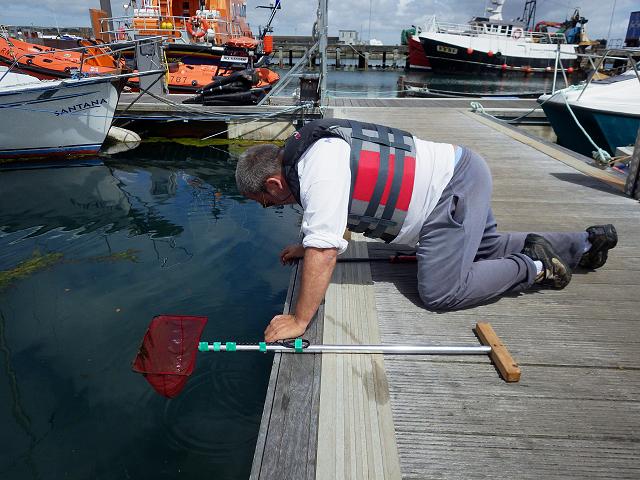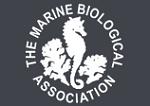
APHOTOMARINE
An online educational resource dedicated to the photography of
marine themes, marinelife, life on the seashore and in rockpools
in the coastal waters of south-West England by David Fenwick.

Weed washing for sea slugs (heterobranchs) at marinas (Sampling method images)
Scroll down and rollover titles to change screen image or click on title to view image.
Marine sampling
Weed washing for sea slugs
- looking for suitable pieces of hydroid covered algae to wash 1
Weed washing for sea slugs
- looking for suitable pieces of hydroid covered algae to wash 1
Marine sampling
Weed washing for sea slugs
- collecting algae from side of pontoon 1
Marine sampling
Weed washing for sea slugs
- sea slugs in smaller specimen containers 1
Marine sampling
Weed washing for sea slugs
- photographing specimens; Polycera quadrilineata 1
Marine sampling
Weed washing for sea slugs
- photographing specimens; Doris cf. ocelligera 1
Marine sampling
Weed washing for sea slugs
- photographing specimens; various species 1
Marine sampling
Weed washing for sea slugs
- photographing specimens; various species 2
Marine sampling
Weed washing for sea slugs
- photographing specimen; Eubrachus farrani 1
Marine sampling
Weed washing for sea slugs
- returning specimens 1
Notes for above -
Equipment Used:
2 Buckets, one larger than the other.
4 - 5 airtight plastic food storage containers. 210mm x 140mm x 100mm.
1 x 500mm Heavy Duty Scraper with 50mm head.
1 x 250mm rectangular fine mesh aquarium net on 1200mm pole.
Lots of small storage containers for examining and sorting samples, petri dishes OK but too small to keep specimen in for any length of time.
3ml Disposable plastic pipettes
Plastic teaspoons
Battery aerator
Two buckets are used, one for the collection of algae, another larger which is filled three-quarters full of seawater for washing algae. A long-handled scraper and long-handled net are used in the collection of algae. Two buckets of algae are collected and washed before straining the contents of the washing bucket through a plastic kitchen sieve, 1mm holes approx.. On straining a lot of diatoms, algae, sediment and other things choke the sieve, crabs, prawn, sea squirts are removed at this time but as much sediment as possible is removed before putting the strained material into a container of fresh seawater. Getting rid of sediment is highly important as not only will it make the water cloudy, it will make the sample anoxic sooner and sediment will also transport bacteria and fungi which will affect the life of the sample.
The material collected along with the sea slugs is quite fine and usually contains lots of small pieces of fine algae, this has a large surface area and on warm days a portable battery operated air pump is needed to oxygenate the water. Water with small pieces of algae, small sea squirts and sponge can quickly become anoxic. Sample containers are filled with no more than 1/4 full of the strained material containing the nudibranchs, any larger or important nudis can be removed and put in their own smaller container on site.
Containers are filled ''full'' of seawater to prevent any sloshing during transport. Taking them back to study has to be a fairly quick process during the summer if a cool box isn't used. On returning water is taken from the container so the level is 10mm from the top, to enable easy carriage of containers, this water can be collected and filtered for later use in photography. Containers are then placed in a kitchen fridge and chilled slightly to prolong the life of the sample. The containers are checked after settling for 30 minutes and sea slugs are transferred to smaller containers using plastic pipettes. Plastic pipettes are idea as you can cut a series or diameter ends to fit large and small sea slugs to prevent damage to them when collecting.
Varying the time spent inside and outside the fridge, thus changing the water temp. and light, and stirring, can increase the number of sea slugs found, as can the wearing of a magnifying headband and use of a small torch. Initially, most of the sea slug will be found on the sides of the container, but later one has to go looking for them on fine algae etc., and there will usually be more small specimens than larger ones.
Without aeration the lifespan of the sample in the container is no more than 24 hours, so nudibranchs need to be removed from the sample within this time. Gathering one day to return the next is the best practice. On returning specimens, the temp. of the water in the storage container should match seawater temp., containers might need chilling or warming slowly in a bucket of seawater to equalize the temperature.
On gathering algae from pontoons it is important not to strip all the algae from pontoons, but leave about half on each pontoon as there may be eggs present on the algae. So it is best to remove damaged or ageing fronds first, as these might break off and be lost first anyway. The highest number of sea slugs I have found on just six pieces of Wakame has been 180, numbers may of course differ from marina to marina, but the method is tried and tested and works. The best large brown algae to collect are aging fronds that have collected a range of epi-fauna including hydroids, colonial tunicates and bryozoans; ''sea slug food"!
The best species of algae to wash are Wakame, Undaria pinnatifida; Kelp, Laminaria hyperborea; and Sugar Kelp, Saccharina latissima.
Other molluscs that are commonly found in the sample include -
Acanthochitona crinita
Chlamys varia
Heteranomia squamula
Hiatella arctica
Musculus subpictus
Mytilus galloprovincialis
Ostrea edulis
Cerithiopsis tubercularis
Lamellaria perspicua
Patella pellucida
Patella vulgata
Rissoa parva
Tritia incrassata
Trivia monacha
----------------------------------------
APHOTOMARINE supports open source data recording and sharing for the benefit of wildlife, recorders, research, science and education. The project recommends the following websites and works with the following bodies and organisations.
The Marine Biological Association or MBA, based in Plymouth, is one of the world’s longest-running societies dedicated to promoting research into our oceans and the life they support. Since 1884 the MBA has been providing a unified, clear, independent voice on behalf of the marine biological community.It has a growing membership in over 40 countries.
The National Biodiversity Network or NBN is a charity that supports open source data sharing and recording supporting conservation, science and education. "Why do recorders need open source?". Simply because it supports the core values of wildlife recording and the free use of records and data over a very wide network that includes partners like the Natural History Museum.
The taxonomy used here is based on that of the following database, which is also used by the MBA, NHM and the NBN.
The World Register of Marine Species or WoRMS.

The main objective of this website is in furthering environmental awareness and education through the medium of photography. To increase awareness and access to the wildlife of the region and help
people find and identify it. Sometimes the difference between species is obvious but many species can only be determined by observing microscopic characteristics that are specific to any one species.

